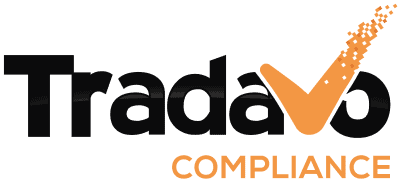5 Common Product Compliance Mistakes From Amazon Sellers
Especially when you’re starting as an Amazon seller, you’re bombarded with information, rules, regulations, and ordinances. So it’s no surprise that one or the other mistake happens during such a project. However, in spite of this, most errors can be avoided, so we created this guide for you: Here, you will find the five most common product compliance mistakes. We also give you an overview of each error’s consequences for you and your business.
Incorrect packaging and product labeling
Most mistakes made by Amazon Sellers happen regarding product and packaging labeling. Understandable since there are many things to consider here: CE marking, contact address, unique markings for the different countries where the product is sold, … and much more. We have now listed the most common mistakes in the labeling field, separated into packaging and product labeling.
Sources of error in packaging labeling
Error source 1 is the contact address. Sometimes it is completely missing or incorrectly attached to the packaging. Sellers also often write ”Distributed by” on their packaging, even though they legally act as manufacturers. This article can find exact definitions and explanations of the different economic actors. A missing article number on the packaging can also lead to problems.
Error source number 2 is the CE mark. It must not be affixed if the product is not a CE product. However, if the product in question is a CE product, the mark must be affixed! Further problems arise if the mark is applied with wrong, distorted, or too small dimensions.
The use of seals is also not as straightforward as it appears to the layman. When using seals, paying attention to the exact rules and prerequisites is essential. For example, if one wants to use Green Dot, the product must be licensed for each country in which it will be sold. Seals must also not be altered; for example, in the case of the FSC or GOTS seal, the (own) license number must be visible. This brings us to the next point: You are not allowed to print your license number, e.g., FSC, on the package if you only have an advertising license! It is necessary to indicate the license number of the packaging manufacturer in such a case.
Another problem is often the missing, wrong, or insufficient labeling of the packaging for the European market. Here you have to consider that the different countries have different regulations. In France, for example, there is Triman labeling. In Italy, environmental labeling is coming soon; in Spain, the Green Dot mentioned at the beginning is mandatory.
Errors in product labeling
The fibers are often missing or have incorrect labeling, particularly with textile products. For example, a product is labeled 100% cotton, although this is false. In the case of electrical products, completely missing nameplates or using nameplates that are not permanently attached leads to problems.
Also dangerous is the unauthorized use of a GS seal or the affixing of a RoHS label. RoHS (Restriction of Hazardous Substances in electrical and electronic equipment) is a restriction on the use of certain hazardous substances in electrical and electronic equipment. In addition, the “logo” may no longer be affixed to products or packaging, as it is now part of the mandatory CE marking.
Consequences of incorrect packaging and product labeling
The consequences of the above violations can be severe, especially for new or smaller sellers. Especially the incorrect labeling is easily recognizable by a simple product order, even for competitors. If Amazon detects a violation with your products or your packaging, or if it is made aware of it by one of your competitors, this usually results in blocking your listing.
But the competition can also warn you because of such violations. You then have to pay the opponent’s and your lawyer’s fees, sign a cease-and-desist declaration and take care of relabeling your product or packaging. If such relabeling is impossible, you will likely have to destroy your product/packaging.
Also possible is a warning for trademark infringement by licensors and trademark owners like, e.g., the Green Dot, if you use seals entirely without authorization or exceed the limits of your usage license.
Suppose your incorrectly marked goods/packaging is discovered during a customs inspection. In that case, the responsible market surveillance authority will be called in, which may initiate administrative offense proceedings against you in addition to various questions. In addition, you may be subject to heavy fines or even destruction of the goods, depending on the severity of the violation.

Prohibited advertising with seals, test reports, or false promises
As mentioned earlier, you are not allowed to advertise with a seal you have not purchased. Otherwise, you are committing trademark infringement. So if you have purchased a seal, everything should be hassle-free, right? Not quite. Because even with acquired seals, you cannot advertise just as you like.
If a laboratory test is required for a product due to the REACH regulation, you may not simply use these test results for advertising. If you do so, you are advertising with obviousness, which is forbidden! Possible consequences are also here warnings by competitors as well as warnings from the damaged brand owners if you have also advertised illegally with their seals (e.g., from TÜV).
Blind trust in faulty or invalid test reports, certificates, and manufacturer's statements
Trust is good; control is better – this saying is especially true with regard to statements and documents of your manufacturer. Unfortunately, there are many black sheep in this industry as well – such manufacturers often present you with outdated test reports that are invalid for the product or even falsified, with the digital signature missing. Sometimes it is also claimed that other, typically well-known customers such as Lidl or Netto have already purchased from the manufacturer and never requested a test. Therefore, be attentive, do not let yourself be put off, insist on tests, and check provided documents as often as necessary.
We understand that such thorough testing of documents can be very time-consuming and complicated. That is why we at Tradavo are at your side as a competent partner. With our years of experience in product compliance for Amazon sellers, we make sure that your products meet the strict requirements of the EU and that you don’t have to worry about incorrect reports, certificates, or unauthorized products.
You need assistance?
Unfortunately, problems with dubious dealers are not limited to dealers from the Asian region. For example, many European manufacturers import components from Asia and trust the statements and documents of the dealers and then have accordingly faulty or invalid test reports for their products – in this case, the product is also not compliant!
We would now like to show you a few illustrative examples of this problem:
- The manufacturer tested the product in black; you want to sell it in green. Here a new test is necessary because the used colorcould be toxic – the existing test report is not valid anymore.
- Do you want a minor modification of an electrical appliance? Unfortunately, in this case (almost), all test reports have to be done again!
- So now a test is necessary. The manufacturer agrees to this, but under the condition that he handles the test himself. Attention: Here, laboratories not accredited in Europe are often used – there are agreements between laboratory and manufacturer. Also, specific tests may be omitted. A classic case is tests of electrical appliances, where only the outside is tested, as the toxic substances are usually inside.
- The manufacturer sends a different product to the laboratory than the one used in mass production, thus having conforming materials tested for appearance’s sake and then producing with non-conforming materials.
Incorrect or outdated documents
You have already painstakingly taken care of the proper documents, and then problems arise again? Unfortunately, a declaration of conformity can also be outdated, for example, if it no longer contains valid standards. The incompleteness of the declaration also often occurs. If you submit this declaration to an authority, further tests will typically follow, as the authority already has a first indication that something is wrong with your product.
If the declaration is submitted to Amazon as part of an inspection, your product will usually be blocked immediately. Unblocking your product is either very tedious or, in the worst case, even impossible and depends on the favor of the customer support staff.
Therefore, always ensure that your documents are up-to-date and filled out completely and correctly.
Incorrect handling of document requests by customers, competitors, authorities, or Amazon
Over time, it happens to every Amazon Seller – someone makes a document request. In such situations, the rule is to give as little as possible to third parties! But unfortunately, many sellers don’t know precisely which documents to give out, so they disclose too much information or false documents that aren’t accurate. This can lead to big problems, so in case of a document request, you should always stay calm, read the request carefully several times, and recheck your documents before sending them.

Customer or competitor?
The competition in the Amazon Seller area is huge. Therefore, unfortunately, supposed customers with document requests turn out to be competitors who are specifically looking for information with which they warn you or have your product listing blocked on Amazon.
Of course, some real customers request documents such as the REACH declaration. That is also their right. You must then provide this declaration to the customer within 45 days.
Document requests from authorities
Authorities can request all documents from you. In most cases, the requested documents are test reports, technical documentation, and risk assessments.
Document request by Amazon
Amazon itself also requests documents from its sellers from time to time, as it is responsible for the safety of its products. However, Amazon requests are often mistaken because Amazon thinks it is a different product with specific safety standards due to a categorization (wrongly chosen by the seller). For example, if you sell a pillow for babies – due to the wrong categorization and maybe even wrong keywords – Amazon thinks that your pillow is a baby toy. In such situations, stay calm and reread the request carefully.
Do you have further questions beyond this article or want support from a professional? Then contact us now for a free initial consultation to find out how we can help you so that you can sell your products on Amazon stress-free and without any problems.
You need assistance?
Who wrote this article?
As an author, Christina fills the blog section of our website with exciting and informative articles, so that our readers can always take care of product compliance in their company in the most well-informed way.




